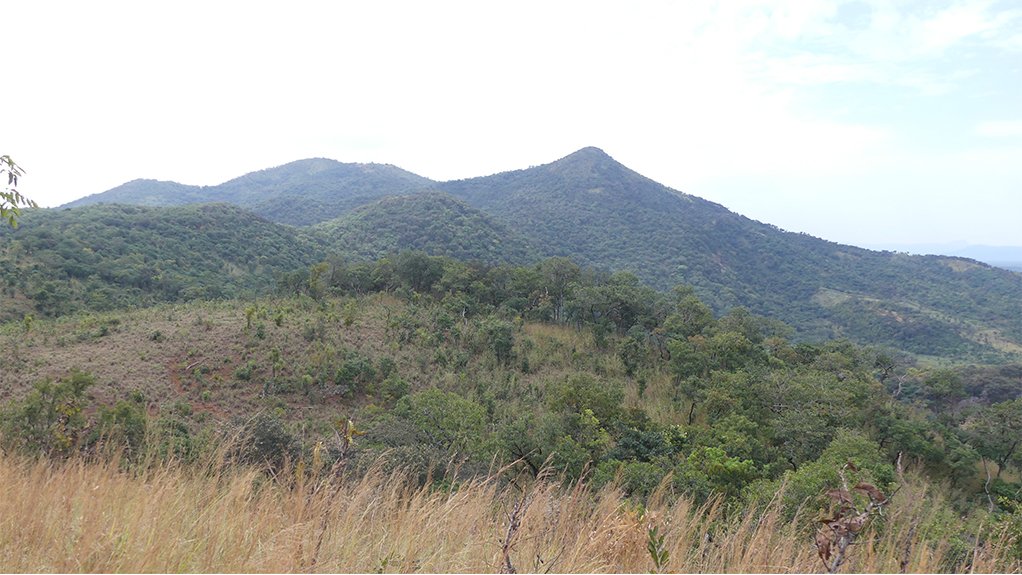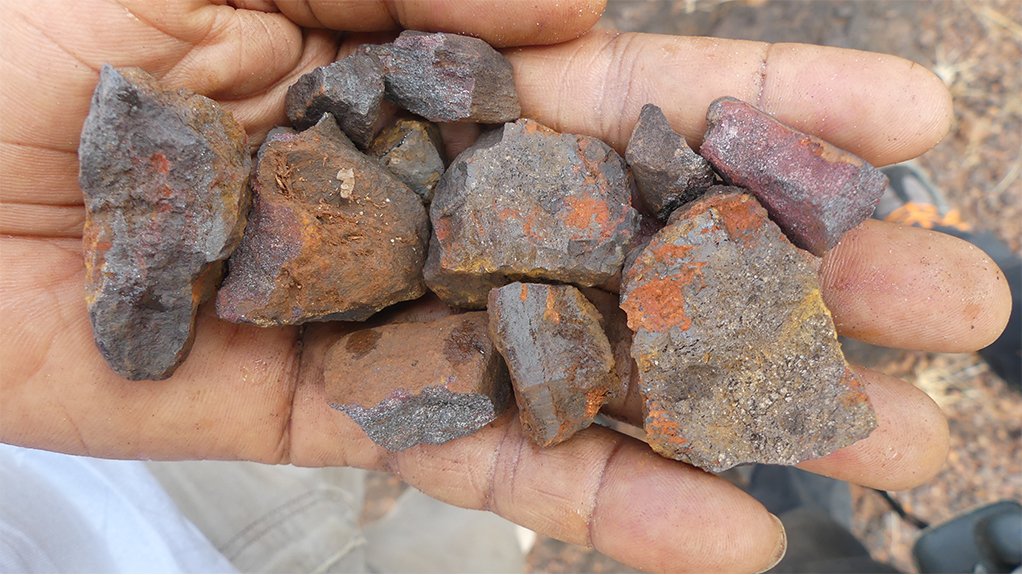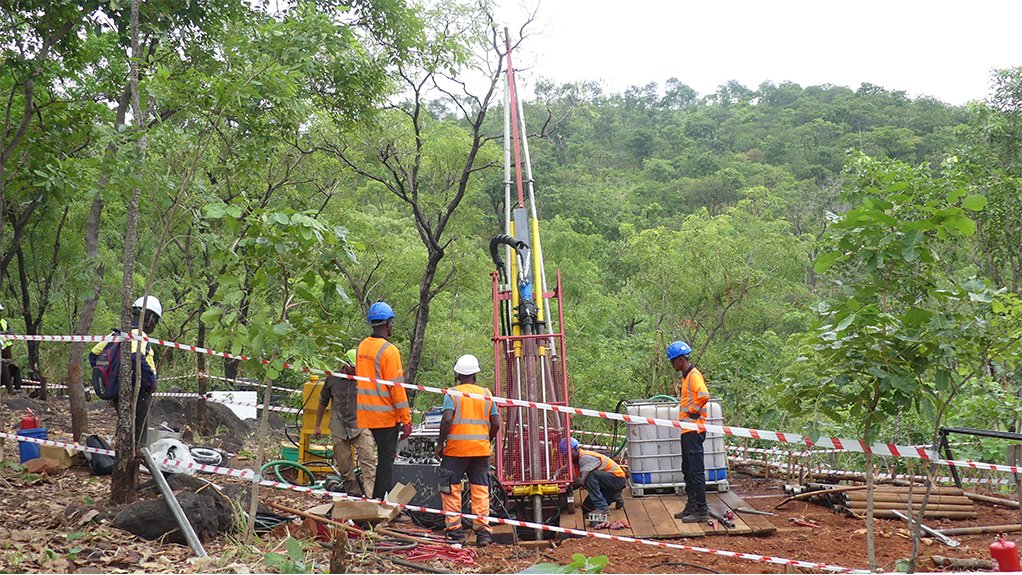Australia-headquartered, ASX-listed West Africa explorer and developer Arrow Minerals’ early-stage Simandou North iron project, in south-eastern Guinea, is assisting in consolidating the company’s position in West Africa, as well as diversifying its commodity base and sovereign risk, says MD Hugh Bresser.
The Simandou North iron project consists of exploration permit 22967 which lies at the northern end of the Simandou Range and forms an extension of the stratigraphy that hosts one of the largest undeveloped high-grade iron deposits in the world.
Arrow Minerals’ medium-term goal is to define the resource, with the intention to conduct a prefeasibility study in 2026, while the long-term goal is to enhance the resource and go into production, he explains.
The company has continued to conduct geological mapping and geochemical sampling across the project, which has highlighted iron zones with grades above 58% and 60%.
Arrow Minerals has defined four targets at Simandou North – Dalabatini, Diassa, Kowouleni and Kalako – and is progressing there with a drilling campaign.
Thus far, the company has drilled 16 holes, five of which are at the Dalabatini target, while 11 holes are at the Kowouleni prospect.
A key aspect of pursuing the Simandou North project is the high-grade potential inherent in the Simandou Range. In comparison to the prospective Pilbara region in Western Australia, where the highest grade is about 58% iron, Simandou offers the opportunity to offer higher grade iron-ore to the market, he explains.
Further, as higher-grade iron requires less energy in the steel conversion process, it can assist in reducing the amount of carbon emissions in the steelmaking sector. This will become a key determining factor for Arrow Minerals’ Simandou North project’s feasibility as more producers aim to produce cleaner steel.
“That is something that we took into consideration when looking at Simandou – the impact it has on the market and the global environment,” says Bresser.
Simandou Range
The Simandou North project provides Arrow Minerals with access to the premium iron belt in West Africa where significant infrastructural improvements are currently underway.
The Simandou Range is host to about four-billion tonnes of iron at a grade of about 65%, with the Simandou North project lying about 110 km in a southerly direction.
Diversified major Rio Tinto owns half of Simandou Range, while multidisciplinary company Winning Consortium Simandou (WCS) owns the other half.
The Simandou Range was discovered by Rio Tinto in the late 1990s; however, the region did not have any significant development, largely owing to infrastructural constraints.
“We have the same rocks, stratigraphy and environment, so we're looking to be able to build a resource in that area,” Bresser says.
In 2020, the Guinea government, along with Rio Tinto and WCS, started an initiative to build multipurpose infrastructure including rail and port facilities, enabling Rio Tinto and WCS to start mining production.
Arrow Minerals intends to rely on some of this established infrastructure to move material to port and onto overseas markets.
Bresser notes that, thus far, Arrow has not experienced any significant challenges apart from the limited infrastructure, which he points out is changing “dramatically” in a positive direction.
Africa Down Under
Arrow Minerals will be exhibiting at the Africa Down Under exhibition, taking place in Perth, Australia from September 6 to 8.
Commenting on the number of Australia-based exploration companies investing in Africa-based projects, Bresser explains that there is appetite for African projects owing to the “untapped potential” such companies see in Africa.
He elaborates that exploring opportunities in Africa gives Australia-based explorers and developers the possibility of discovering significantly large resources that could change the dynamics of the companies involved.
“Those opportunities are far and few between if you focus just on the Australian market,” Bresser points out.
Further, pursuing projects in Africa provides investors from the Australian market with exposure to “world-class opportunities” in jurisdictions that can provide a longer-term growth path, he states.
Bresser asserts that the biggest opportunity for Australian investors and companies is accessing high-quality projects with the support of local governments and increasing the value added to the targeted country and its people.
Commenting on the African Down Under exhibition, Bresser explains that it provides Australian companies with an opportunity to meet directly with government and operational officials from various jurisdictions.
Further, companies can also meet with peers to discuss some of the challenges and opportunities they encounter in their operations.
The conference, he says, also provides the opportunity for companies to share experiences, discuss ways to improve and maintain an understanding of what it means to operate in Africa, and how to do so successfully.
“It is different to operating in Australia, but getting everyone together in the one place, at the same time, allows for that shared knowledge to proliferate through the companies,” he concludes.
Edited by: Donna Slater
Features Deputy Editor and Chief Photographer
EMAIL THIS ARTICLE SAVE THIS ARTICLE
ARTICLE ENQUIRY
To subscribe email subscriptions@creamermedia.co.za or click here
To advertise email advertising@creamermedia.co.za or click here

















